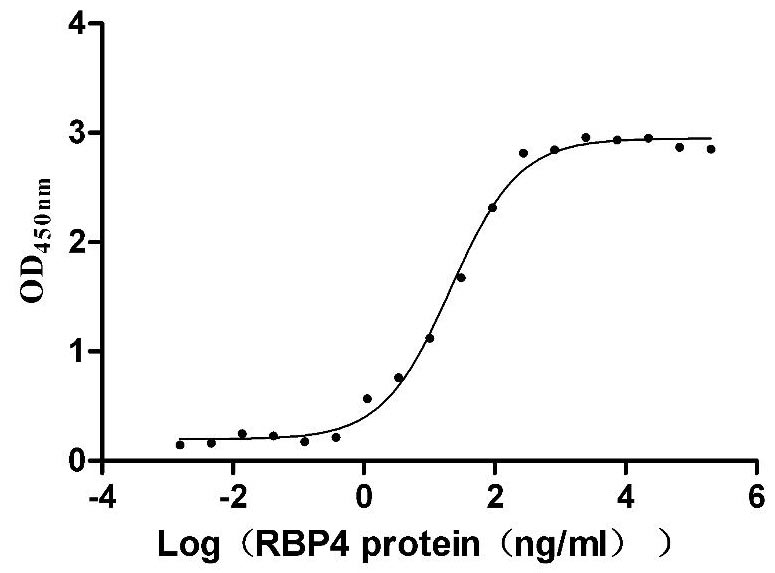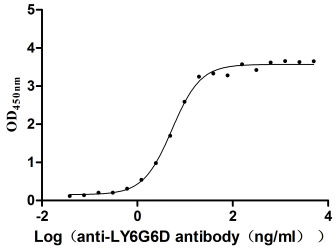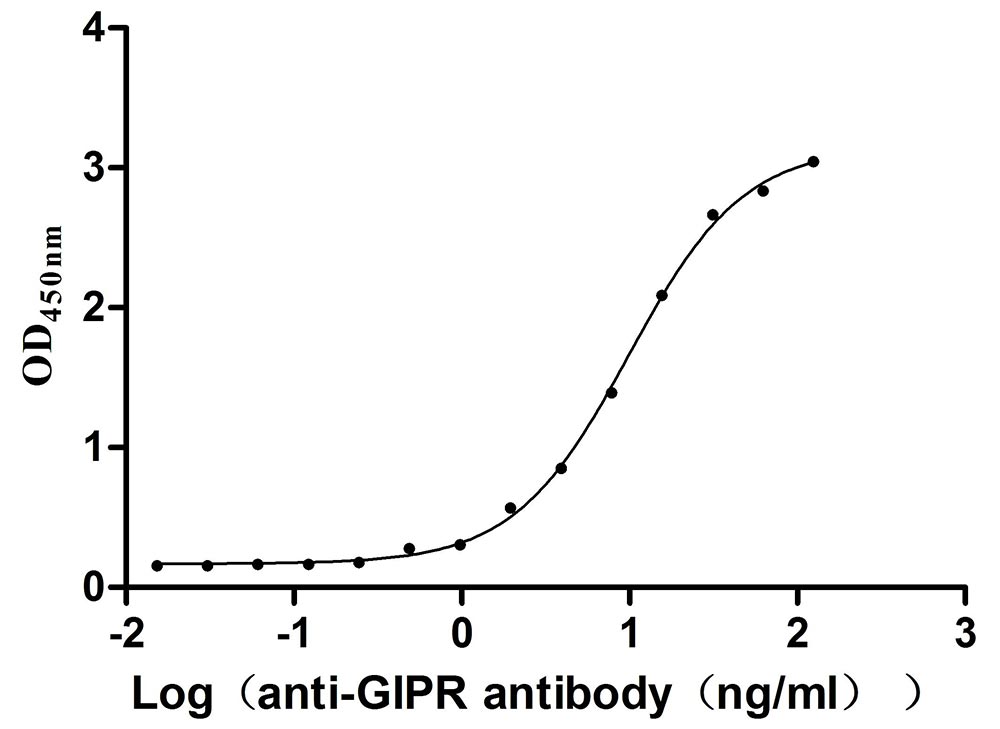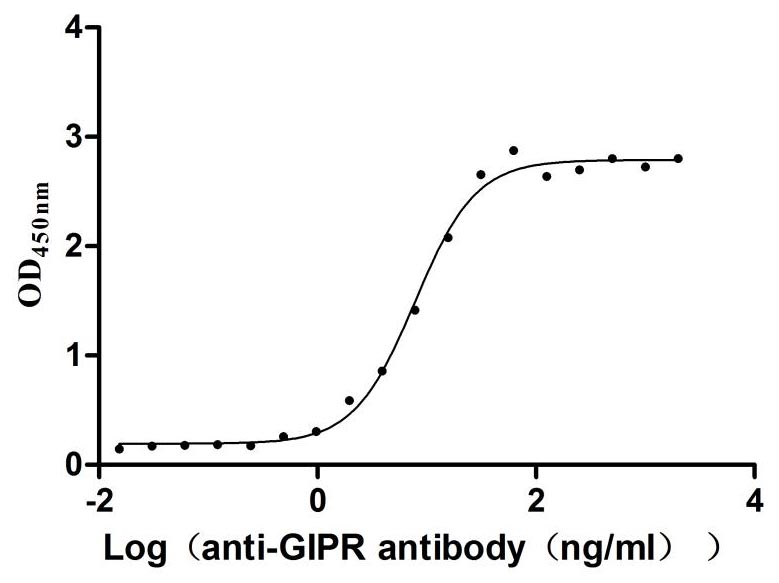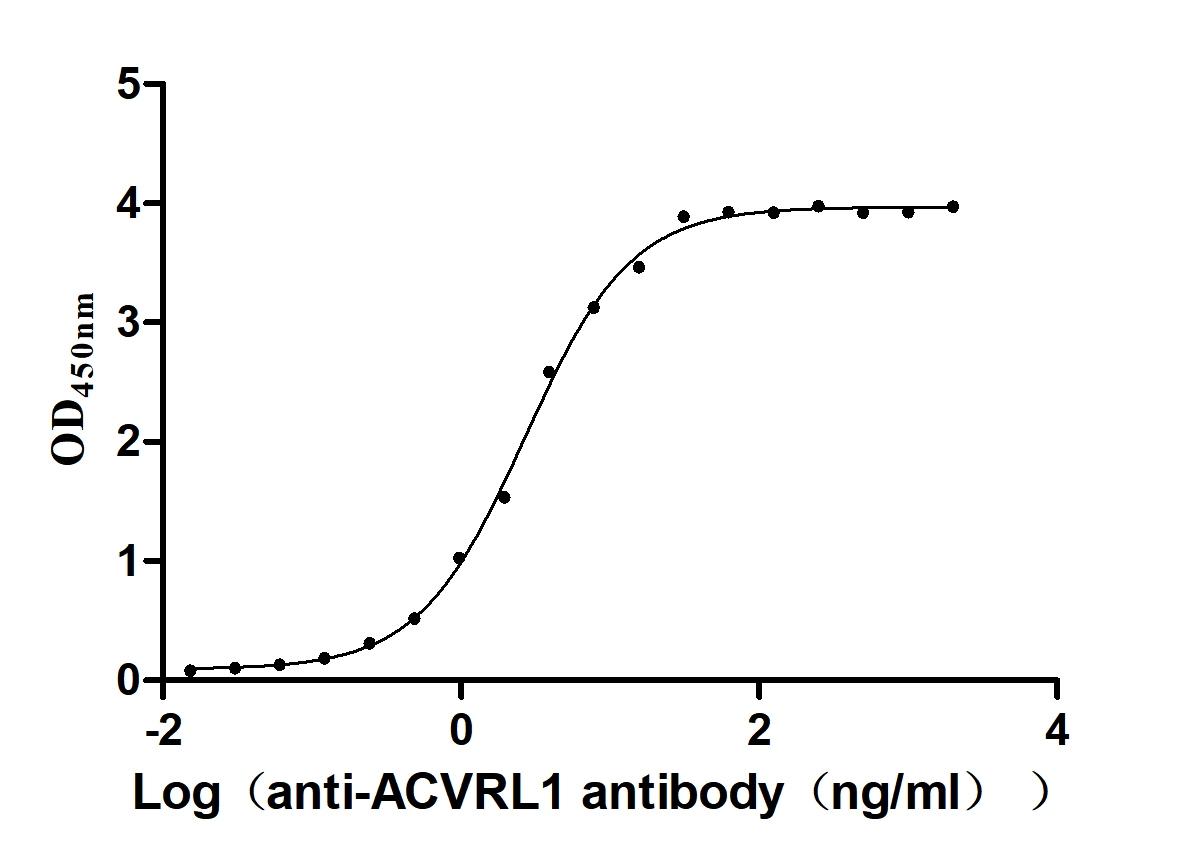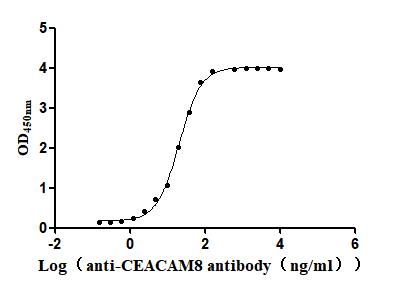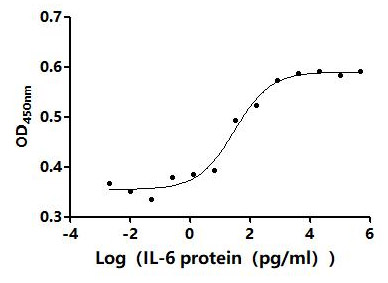Recombinant Human Spermatogenesis-associated protein 7 (SPATA7)
-
中文名稱:人SPATA7重組蛋白
-
貨號:CSB-EP865200HU-B
-
說明書:
-
規格:
-
來源:E.coli
-
共軛:Avi-tag Biotinylated
E. coli biotin ligase (BirA) is highly specific in covalently attaching biotin to the 15 amino acid AviTag peptide. This recombinant protein was biotinylated in vivo by AviTag-BirA technology, which method is BriA catalyzes amide linkage between the biotin and the specific lysine of the AviTag.
-
其他:
產品詳情
-
純度:>85% (SDS-PAGE)
-
基因名:SPATA7
-
Uniprot No.:
-
別名:SPATA7; HSD3; Spermatogenesis-associated protein 7; HSD-3.1; Spermatogenesis-associated protein HSD3
-
種屬:Homo sapiens (Human)
-
蛋白長度:full length protein
-
表達區域:1-599
-
氨基酸序列MDGSRRVRAT SVLPRYGPPC LFKGHLSTKS NAFCTDSSSL RLSTLQLVKN HMAVHYNKIL SAKAAVDCSV PVSVSTSIKY ADQQRREKLK KELAQCEKEF KLTKTAMRAN YKNNSKSLFN TLQKPSGEPQ IEDDMLKEEM NGFSSFARSL VPSSERLHLS LHKSSKVITN GPEKNSSSSP SSVDYAASGP RKLSSGALYG RRPRSTFPNS HRFQLVISKA PSGDLLDKHS ELFSNKQLPF TPRTLKTEAK SFLSQYRYYT PAKRKKDFTD QRIEAETQTE LSFKSELGTA ETKNMTDSEM NIKQASNCVT YDAKEKIAPL PLEGHDSTWD EIKDDALQHS SPRAMCQYSL KPPSTRKIYS DEEELLYLSF IEDVTDEILK LGLFSNRFLE RLFERHIKQN KHLEEEKMRH LLHVLKVDLG CTSEENSVKQ NDVDMLNVFD FEKAGNSEPN ELKNESEVTI QQERQQYQKA LDMLLSAPKD ENEIFPSPTE FFMPIYKSKH SEGVIIQQVN DETNLETSTL DENHPSISDS LTDRETSVNV IEGDSDPEKV EISNGLCGLN TSPSQSVQFS SVKGDNNHDM ELSTLKIMEM SIEDCPLDV
-
蛋白標簽:Tag?type?will?be?determined?during?the?manufacturing?process.
The tag type will be determined during production process. If you have specified tag type, please tell us and we will develop the specified tag preferentially. -
產品提供形式:Lyophilized powder Warning: in_array() expects parameter 2 to be array, null given in /www/web/cusabio_cn/public_html/caches/caches_template/default/content/show_product_protein.php on line 662
Note: We will preferentially ship the format that we have in stock, however, if you have any special requirement for the format, please remark your requirement when placing the order, we will prepare according to your demand. -
復溶:We recommend that this vial be briefly centrifuged prior to opening to bring the contents to the bottom. Please reconstitute protein in deionized sterile water to a concentration of 0.1-1.0 mg/mL.We recommend to add 5-50% of glycerol (final concentration) and aliquot for long-term storage at -20℃/-80℃. Our default final concentration of glycerol is 50%. Customers could use it as reference.
-
儲存條件:Store at -20°C/-80°C upon receipt, aliquoting is necessary for mutiple use. Avoid repeated freeze-thaw cycles.
-
保質期:The shelf life is related to many factors, storage state, buffer ingredients, storage temperature and the stability of the protein itself.
Generally, the shelf life of liquid form is 6 months at -20°C/-80°C. The shelf life of lyophilized form is 12 months at -20°C/-80°C. -
貨期:Delivery time may differ from different purchasing way or location, please kindly consult your local distributors for specific delivery time.Note: All of our proteins are default shipped with normal blue ice packs, if you request to ship with dry ice, please communicate with us in advance and extra fees will be charged.
-
注意事項:Repeated freezing and thawing is not recommended. Store working aliquots at 4°C for up to one week.
-
Datasheet :Please contact us to get it.
相關產品
靶點詳情
-
功能:Involved in the maintenance of both rod and cone photoreceptor cells. It is required for recruitment and proper localization of RPGRIP1 to the photoreceptor connecting cilium (CC), as well as photoreceptor-specific localization of proximal CC proteins at the distal CC. Maintenance of protein localization at the photoreceptor-specific distal CC is essential for normal microtubule stability and to prevent photoreceptor degeneration.
-
基因功能參考文獻:
- Compound heterozygous c.1100A > G, p.(Y367C) and c.1102_1103delCT, p.(L368Efs*4) variants in SPATA7 manifest as an unusual RP phenotype in this case, showing extensive choroidal sclerosis and retinal pigment epithelium (RPE) atrophy with evidence of progression over two years on multimodal imaging. PMID: 29411205
- We present the clinical and genetic findings of two siblings harboring the c.1112T>C/p.I371T homozygous mutation in the SPATA7 gene. PMID: 28481129
- The disease resulting from SPATA7 mutations in this patient initially presented as a cone-rod dystrophy (CRD), but changed over time into a phenotype more reminiscent of late-stage retinitis pigmentosa (RP). PMID: 26854980
- SPATA7 plays a role in RPGRIP1-mediated protein trafficking across the connecting cilium of photoreceptor cells. Apoptotic degeneration of these cells triggered by protein mislocalization is a mechanism of disease progression in LCA3/juvenile RP patients PMID: 25398945
- A novel homozygous large deletion in SPATA7 associated with juvenile retinitis pigmentosa has been found in a consanguineous Israeli Muslim Arab family. PMID: 25814828
- Digenic and triallelic mutations of CRB1 and SPATA7 were detected in a Chinese family with Leber congenital amaurosis. The results imply that CRB1 and SPATA7 may not interact with each other directly. PMID: 22219627
- In conclusion, our data established the first linkage association of a loss-of-function mutation in the SPATA7 gene with a typical retinitis pigmentosa (RP) phenotype and not with leber congenital amaurosis or early onset RP. PMID: 22136677
- Mutations in SPATA7 are a rare cause of childhood retinal dystrophy accounting for 1.7% of disease in this cohort. PMID: 21310915
- analysis of the SPATA7 mutations in Leber congenital amaurosis and the associated phenotype PMID: 20104588
- isolation and characterization of HSD-3.1 expressed in the testis PMID: 12736779
- Spata7 is expressed in the mature mouse retina. PMID: 19268277
顯示更多
收起更多
-
相關疾病:Leber congenital amaurosis 3 (LCA3); Retinitis pigmentosa autosomal recessive (ARRP)
-
亞細胞定位:Cytoplasm, cytoskeleton, cilium axoneme. Cytoplasm, cytoskeleton, cilium basal body. Cytoplasm, cytoskeleton. Cell projection, cilium, photoreceptor outer segment.
-
數據庫鏈接:
Most popular with customers
-
Recombinant Mouse Transthyretin (Ttr) (Active)
Express system: Mammalian cell
Species: Mus musculus (Mouse)
-
Recombinant Macaca fascicularis lymphocyte antigen 6 family member G6D (LY6G6D) (Active)
Express system: Yeast
Species: Macaca fascicularis (Crab-eating macaque) (Cynomolgus monkey)
-
Recombinant Human Desmoglein-2 (DSG2), partial (Active)
Express system: Mammalian cell
Species: Homo sapiens (Human)
-
Recombinant Mouse Gastric inhibitory polypeptide receptor (Gipr), partial (Active)
Express system: Mammalian cell
Species: Mus musculus (Mouse)
-
Recombinant Rat Gastric inhibitory polypeptide receptor (Gipr), partial (Active)
Express system: Mammalian cell
Species: Rattus norvegicus (Rat)
-
Recombinant Human Serine/threonine-protein kinase receptor R3 (ACVRL1), partial (Active)
Express system: Baculovirus
Species: Homo sapiens (Human)
-
Recombinant Human Carcinoembryonic antigen-related cell adhesion molecule 8(CEACAM8) (Active)
Express system: Mammalian cell
Species: Homo sapiens (Human)
-


